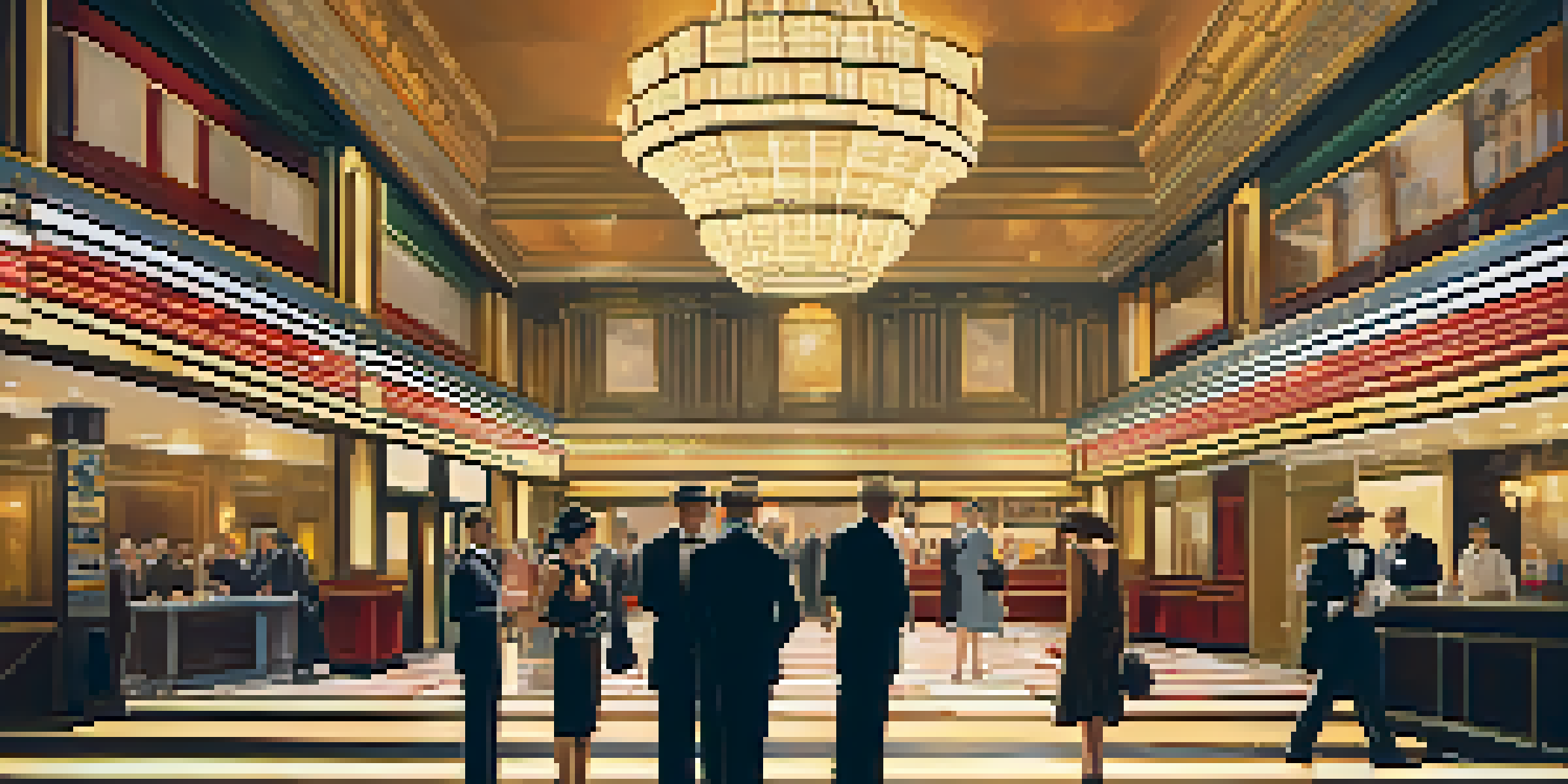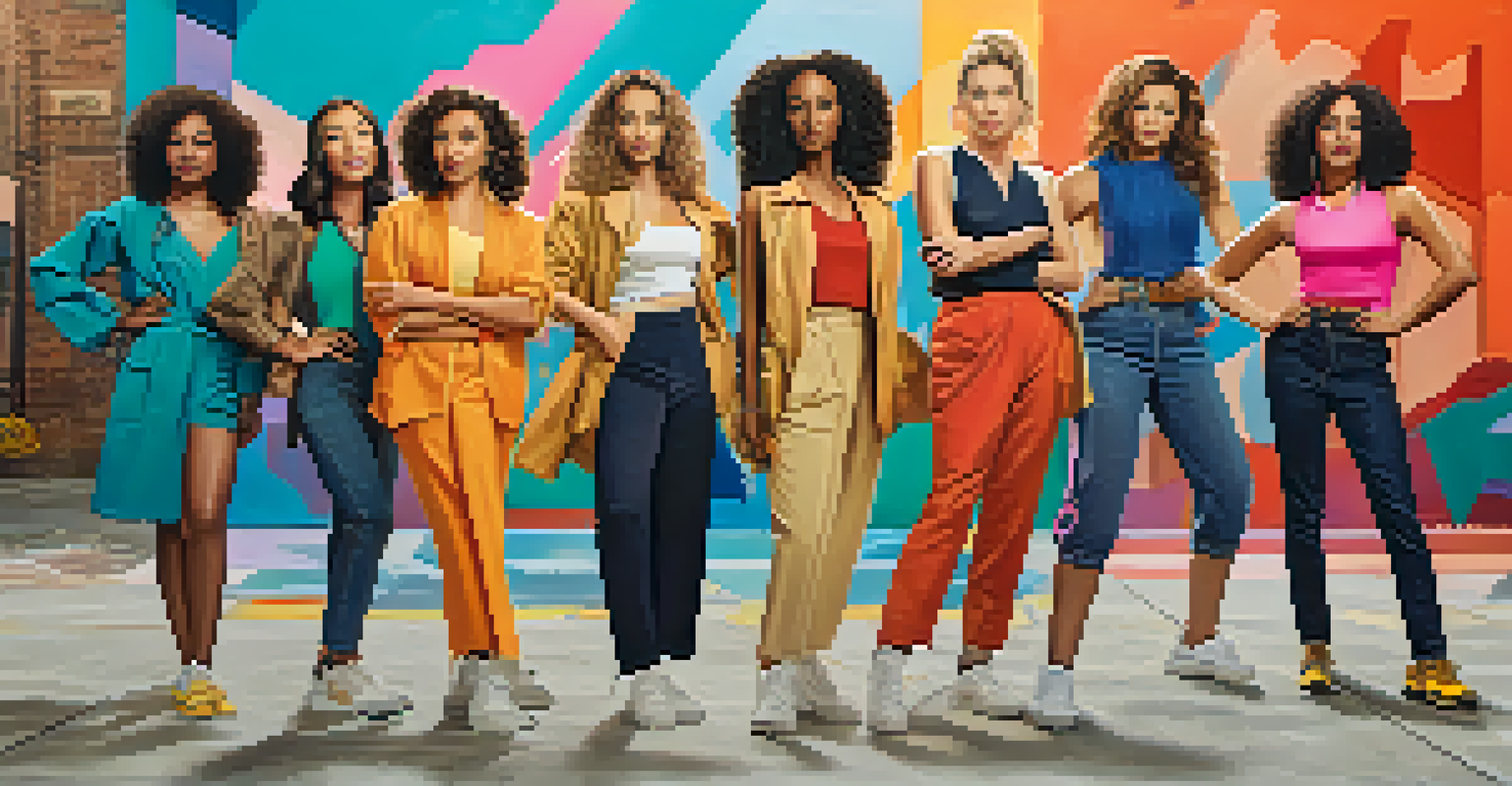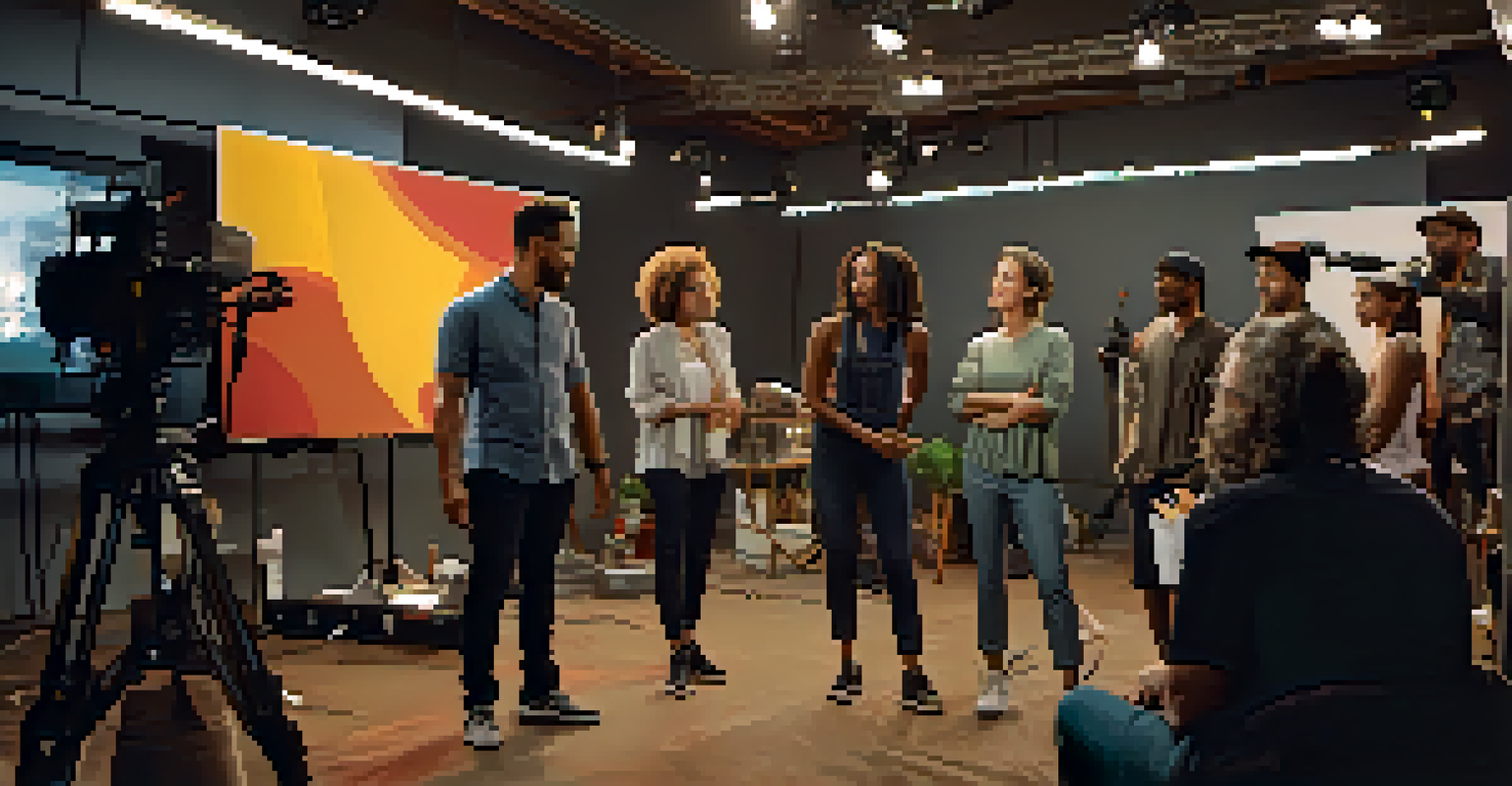Hollywood and the Evolution of Global Gender Narratives

The Birth of Gender Roles in Early Cinema
In the early days of cinema, gender roles were often starkly defined, with men as heroes and women relegated to supporting characters. This binary representation mirrored societal norms of the time, where women were primarily seen in domestic roles. Films like 'The Birth of a Nation' exemplified these rigid portrayals, reinforcing stereotypes rather than challenging them. As audiences flocked to theaters, these narratives began to shape public perceptions about gender.
Cinema is a mirror of our society. It reflects our fears, our hopes, and our struggles, often before we even fully understand them ourselves.
The silent film era, while groundbreaking, typically showcased women as damsels in distress or temptresses, leaving little room for complexity. This simplistic portrayal laid the groundwork for decades of similar depictions, where female characters often lacked agency. Consequently, the film industry not only reflected societal views but also influenced them, making it crucial to examine how these narratives evolved over time.
As we progress to the mid-20th century, the emergence of more nuanced characters began to hint at changes in societal attitudes. Films like 'His Girl Friday' showcased women who were assertive and independent, suggesting that audiences were ready for more diverse representations. This shift marked the beginning of a slow, yet significant evolution in gender narratives within Hollywood.
The Influence of the Women's Liberation Movement
The 1960s and 70s marked a turning point, as the Women's Liberation Movement gained momentum, impacting Hollywood's storytelling. Filmmakers began to explore themes of female empowerment and equality, often using cinema as a platform for social change. Movies like 'Nine to Five' highlighted workplace sexism and the fight for equal rights, resonating with audiences and pushing for a broader conversation about gender issues.

This era also saw the introduction of more complex female protagonists, allowing women to break free from traditional roles. Characters like Ellen Ripley in 'Alien' challenged the notion of women as mere sidekicks, showcasing strength and resilience. These portrayals contributed to a cultural shift, encouraging women to see themselves in roles beyond domestic spheres.
Gender Roles Shaped by Cinema
Early films reinforced traditional gender roles, often depicting men as heroes and women in limited, supporting positions.
While the movement brought significant changes, it also faced backlash. Critics argued that Hollywood was merely capitalizing on feminist ideals without genuine commitment to equality. Nevertheless, the seeds planted during this period laid the groundwork for future generations of filmmakers to continue challenging gender norms.
The Rise of Intersectionality in Film
As the conversation around gender evolved, so did the need for intersectionality in storytelling. Intersectionality recognizes that individuals have multiple identities that intersect and influence their experiences, such as race, class, and sexuality. This understanding started to seep into Hollywood narratives, paving the way for diverse voices to be heard.
The stories we tell are the stories we live. If we want to change the world, we need to change the stories we tell.
Films like 'Black Panther' and 'Crazy Rich Asians' not only showcased diverse casts but also highlighted the complexities of their characters' identities. These stories challenged the traditional Hollywood narrative, offering a more inclusive perspective that resonated with broader audiences. By integrating intersectionality, filmmakers began to create richer, more authentic narratives that reflect real-life experiences.
However, the journey toward true representation is ongoing. Despite progress, many stories still overlook the nuances of intersectionality, often defaulting to stereotypes. It’s essential for the industry to continue evolving, embracing complexity in characters and narratives to truly reflect the diverse world we live in.
The Impact of Social Media on Gender Narratives
Social media has become a powerful tool for shaping gender narratives, providing a platform for voices that were often marginalized in traditional media. Movements like #MeToo and #TimesUp gained traction online, challenging Hollywood to confront its past and present gender inequalities. This wave of activism not only influenced public opinion but also pressured the industry to make meaningful changes.
As audiences engage with content on social media, they demand authenticity and representation, forcing filmmakers to reassess their storytelling approaches. The rise of platforms like Instagram and TikTok has allowed diverse creators to share their stories, leading to a more expansive view of gender narratives. This democratization of storytelling empowers individuals to challenge stereotypes and advocate for their own narratives.
Women's Liberation Impacted Film
The Women's Liberation Movement led to more complex female characters in Hollywood, reflecting societal shifts towards gender equality.
While social media has amplified voices, it has also sparked debates about accountability and representation within Hollywood. The industry must navigate these discussions carefully, ensuring that the push for change aligns with genuine efforts to create inclusive narratives. As we move forward, the intersection of social media and film will continue to shape the conversation around gender.
Exploring Non-Binary and Gender Fluidity in Film
The representation of non-binary and gender-fluid characters in Hollywood is a relatively recent development, reflecting broader societal changes in understanding gender. Films like 'The Danish Girl' and 'Moonlight' have begun to explore these identities, opening up conversations about the complexity of gender beyond the binary. This shift is significant, as it challenges the traditional narratives that have dominated the screen for decades.
By including non-binary and gender-fluid characters, filmmakers can help break down stereotypes and foster greater acceptance in society. These portrayals allow audiences to see the spectrum of gender, promoting empathy and understanding. As more stories emerge, the hope is to normalize these experiences and create spaces for authentic representation.
However, it’s crucial to ensure that these narratives are told by those who embody these identities. Authentic representation matters, and the industry must be vigilant in avoiding tokenism. By prioritizing genuine stories, Hollywood can continue to evolve and reflect the diverse experiences of all individuals.
The Role of Filmmakers and Actors in Advocacy
Filmmakers and actors have increasingly taken on the role of advocates for gender equality in Hollywood, using their platforms to promote change. High-profile figures like Reese Witherspoon and Ava DuVernay have championed projects that focus on female empowerment and diverse storytelling. Their commitment not only inspires others but also encourages a culture of accountability within the industry.
By producing and starring in films that challenge gender norms, these advocates help shift the narrative landscape. Projects like 'A Wrinkle in Time' and 'Big Little Lies' showcase strong female leads and complex storylines, illustrating the power of representation. This shift not only benefits the industry but also offers audiences a chance to see themselves reflected in a more diverse range of characters.
Emergence of Diverse Narratives
The rise of intersectionality in storytelling has encouraged more authentic and inclusive portrayals of gender identities in film.
However, advocacy must go beyond individual projects; it requires systemic change within Hollywood. This includes equitable hiring practices, support for female directors, and investment in diverse storytelling. As more industry leaders take a stand, the hope is for a lasting impact on gender narratives in film.
Looking Ahead: The Future of Gender Narratives in Hollywood
As we look to the future, the evolution of gender narratives in Hollywood continues to unfold. With a growing awareness of the importance of representation, there's a collective push for stories that reflect the complexities of human experiences. The industry is at a pivotal moment, with opportunities to embrace inclusivity and authenticity in storytelling.
Emerging filmmakers and storytellers are breaking barriers and challenging the status quo, often bringing fresh perspectives to the forefront. This new wave of creators is not only reshaping narratives but also redefining what it means to be a part of Hollywood. Their voices are essential in crafting stories that resonate with diverse audiences.

While progress has been made, there is still much work to be done. The industry must remain committed to fostering an environment where all voices are heard and valued. By prioritizing diverse narratives, Hollywood can pave the way for a more inclusive future, ultimately enriching the tapestry of global storytelling.